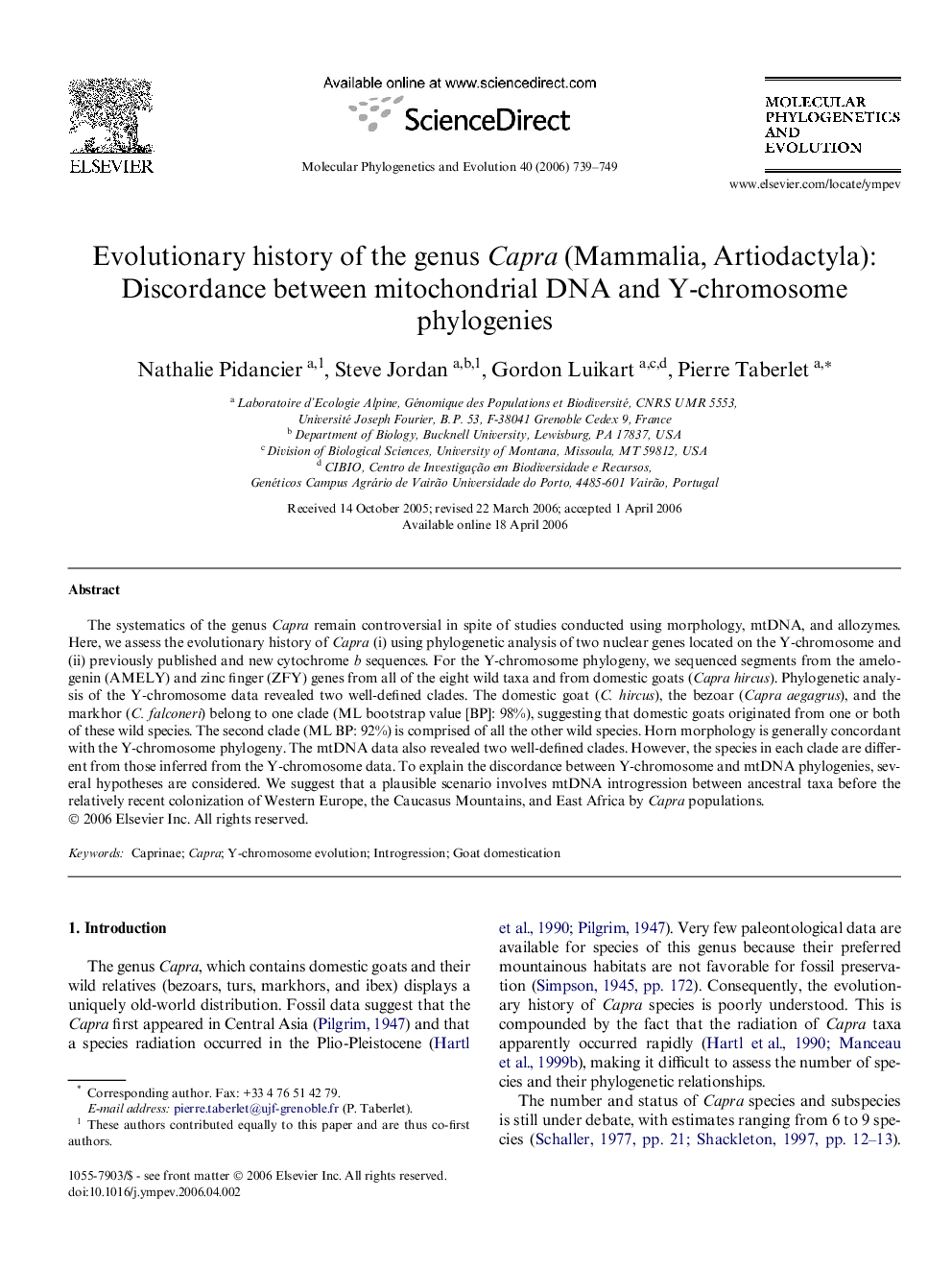| Article ID | Journal | Published Year | Pages | File Type |
|---|---|---|---|---|
| 2835746 | Molecular Phylogenetics and Evolution | 2006 | 11 Pages |
The systematics of the genus Capra remain controversial in spite of studies conducted using morphology, mtDNA, and allozymes. Here, we assess the evolutionary history of Capra (i) using phylogenetic analysis of two nuclear genes located on the Y-chromosome and (ii) previously published and new cytochrome b sequences. For the Y-chromosome phylogeny, we sequenced segments from the amelogenin (AMELY) and zinc finger (ZFY) genes from all of the eight wild taxa and from domestic goats (Capra hircus). Phylogenetic analysis of the Y-chromosome data revealed two well-defined clades. The domestic goat (C. hircus), the bezoar (Capra aegagrus), and the markhor (C. falconeri) belong to one clade (ML bootstrap value [BP]: 98%), suggesting that domestic goats originated from one or both of these wild species. The second clade (ML BP: 92%) is comprised of all the other wild species. Horn morphology is generally concordant with the Y-chromosome phylogeny. The mtDNA data also revealed two well-defined clades. However, the species in each clade are different from those inferred from the Y-chromosome data. To explain the discordance between Y-chromosome and mtDNA phylogenies, several hypotheses are considered. We suggest that a plausible scenario involves mtDNA introgression between ancestral taxa before the relatively recent colonization of Western Europe, the Caucasus Mountains, and East Africa by Capra populations.
